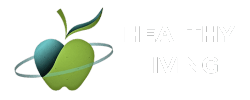Clean eating is more than just a trend; it’s a lifestyle choice that focuses on the consumption of whole, nutritious foods and the minimization of processed, refined ones.
The essence of clean eating lies in choosing foods as close to their natural form as possible, which can be achieved through a variety of clean eating recipes.
This approach emphasizes six main categories: vegetables & fruits, unrefined grains and legumes, meat & seafood, healthy fats, dairy & eggs, and natural sweeteners, guiding individuals towards healthier meal planning and meal prep1.
Embarking on a journey to revitalize your diet doesn’t have to be overwhelming, especially with the right meal plans and easy recipes that cover everything from healthy fats to gluten-free options.
This article presents 30 days of clean eating recipes, designed to incorporate clean food recipes, eat clean recipes, and healthy recipes, ensuring a balanced approach to meal prep recipes.
These selections will not only introduce a variety of flavors and nutrients into your diet but also align with the principles of clean eating for both beginners and seasoned practitioners1.
Discover How This Simple “Meal Plan” Changes My Life Watch the video below to see if this effortless “Way Of Eating” will work for you…
Hearty Chickpea & Spinach Stew Clean Eating Recipes
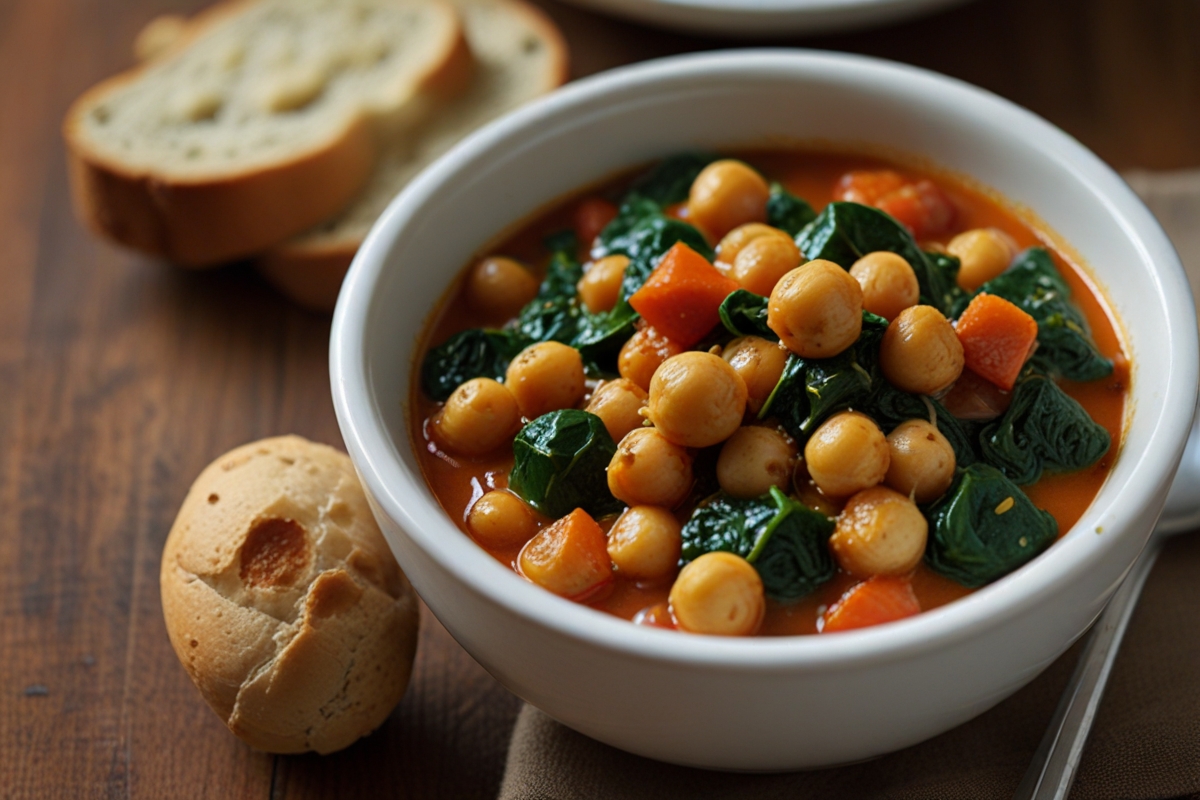
Ingredients and Preparation
- Main Ingredients: Utilize chickpeas, spinach, tomatoes, raisins, saffron, and a variety of spices to create this Mediterranean-inspired dish.
- Cooking Method: The stew can be traditionally cooked in a Tagine, enhancing the flavors through slow cooking.
- Serving Suggestions: Serve the stew in bowls, drizzled with olive oil, and accompanied by crusty bread to soak up the delicious flavors.
Nutritional Information
- Calories and Macros: Each serving contains approximately 339 calories, with a balanced macro split of 43g carbs, 13g proteins, and 14g fats.
- Dietary Attributes: This recipe is diabetes-appropriate, nut-free, dairy-free, and offers options for healthy aging and low-calorie diets.
Storage Tips
- Refrigeration: Store the stew in an airtight container in the refrigerator for up to 4 days, ensuring freshness and ease of reheating.
- Freezing: For longer storage, the stew can be frozen for up to 3 months, making it a convenient meal prep option.
Additional Cooking Tips
- Variations: Enhance the stew by adding a small can of crushed tomatoes or a fried egg on top for extra flavor and texture.
- Quick Meal Prep: The entire dish takes about 30 minutes to prepare, making it an ideal recipe for quick and easy weeknight meals.
This recipe not only offers a nourishing and hearty meal but also aligns with clean eating principles by using whole, unprocessed ingredients.
Salmon Caesar Salad Clean Eating Recipes
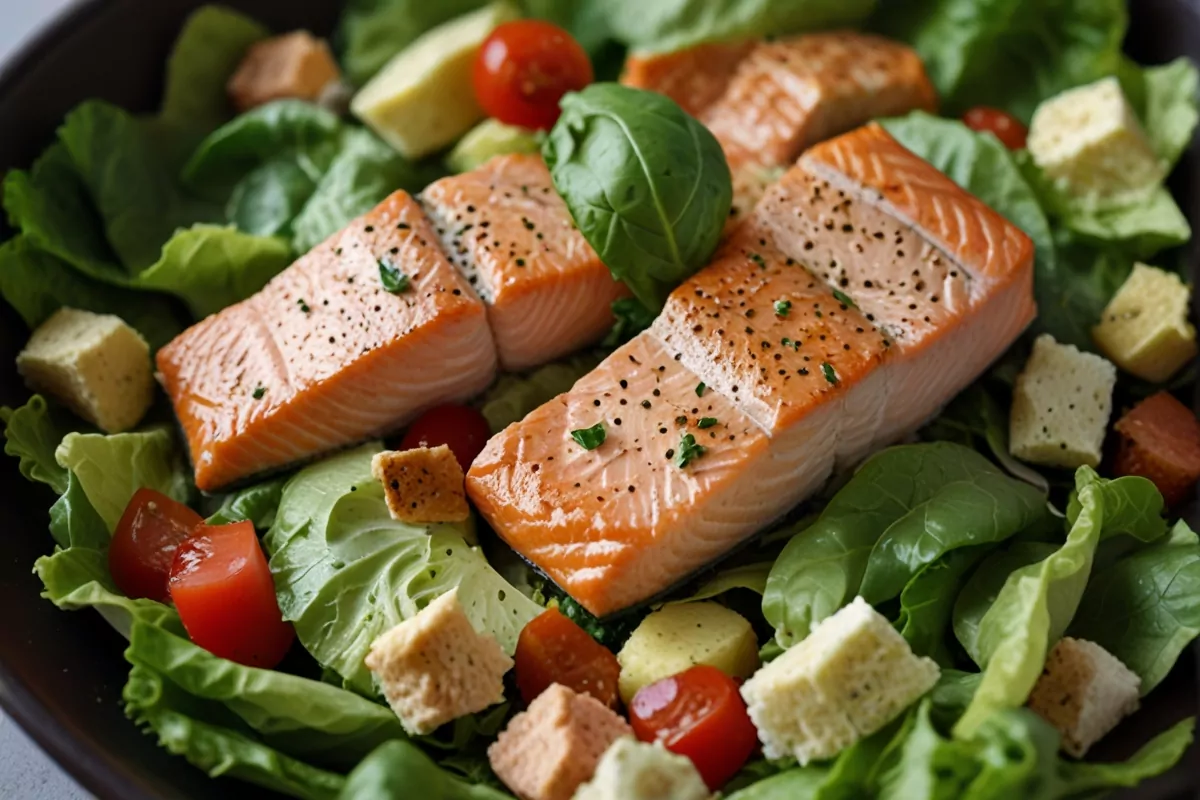
Ingredients and Preparation
- Salmon: Use defrosted frozen salmon fillets, marinated in olive oil, minced garlic, lemon juice, kosher salt, and freshly ground black pepper, then grilled for optimal flavor.
- Dressing: Combine ingredients such as Greek yogurt, minced garlic, Worcestershire sauce, lemon juice, olive oil, anchovy paste, salt, and pepper to create a rich, homemade Caesar dressing.
Nutritional Profile
- Calories and Macros: This salad is designed to be low-carb and high-protein, providing essential nutrients without excessive calories.
- Diet Compatibility: It accommodates various dietary needs including gluten-free and low-carb options.
Special Features
- Crispy Chickpeas: Offered as a nutritious alternative to croutons, these add crunch and flavor without the usual blood sugar spike, making them a healthier choice.
- Diverse Protein Options: While the recipe primarily uses salmon, it can be adapted to include chicken, shrimp, or additional chickpeas for a vegan variant.
Preparation Time and Servings
- Time: Takes approximately 20 minutes to prepare, making it a quick and efficient meal option 9.
- Servings: Typically serves 4, perfect for a family meal or meal prep for future servings 9.
Additional Dietary Information
- Healthy Fats: The salad incorporates olive oil in the dressing, providing healthy fats that are essential for a balanced diet.
- Dairy-Free Options: Offers a dairy-free, vegan, and mayo-free vinaigrette style dressing, catering to those avoiding dairy.
Black Bean Salad with Grilled Pork Cutlets Clean Eating Recipes
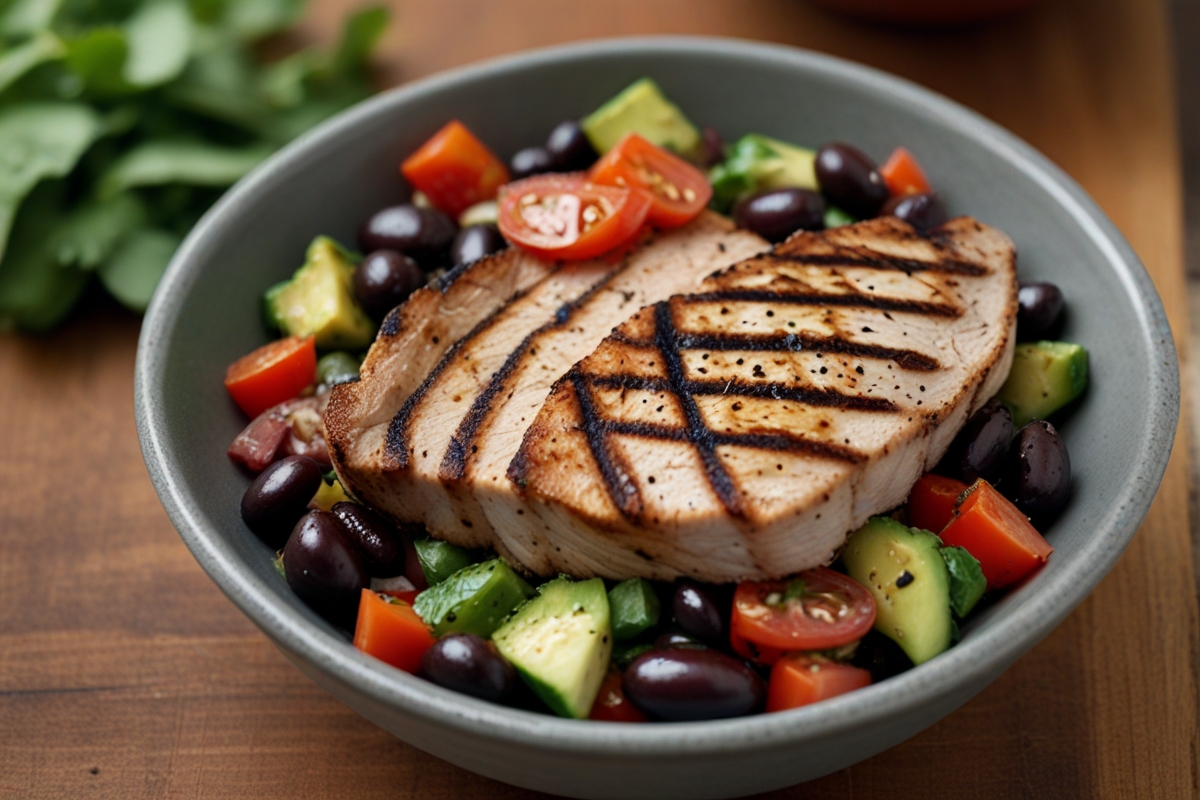
Ingredients and Preparation
- Pork Marinade: Combine lime juice, canola oil, garlic powder, salt, and pepper to marinate the pork cutlets. Allow the marinade to infuse the pork for 15-20 minutes before grilling .
- Salad Composition: Mix olive oil, orange juice, cider vinegar, cumin, oregano, salt, and pepper to create the dressing. Combine this dressing with black beans, barley, chopped red bell pepper, corn, scallions, and cilantro to complete the salad.
Cooking and Serving
- Grilling the Pork: After marinating, grill the pork cutlets until they are thoroughly cooked and have nice grill marks
- Assembly: Serve the grilled pork cutlets alongside the freshly prepared black bean salad for a balanced meal.
Nutritional Information
- Calories: 293 per serving
- Protein: 10 grams
- Fat: 8 grams
- Carbohydrates: 13 grams
Additional Information
- Storage: The pork cutlet can be refrigerated for future use, and the salad can be stored in the fridge for up to 2 days, maintaining its freshness and flavors.
- Dietary Attributes: This recipe is nut-free, dairy-free, soy-free, and high in protein, making it suitable for various dietary needs.
Zucchini, Corn & Egg Casserole Clean Eating Recipes
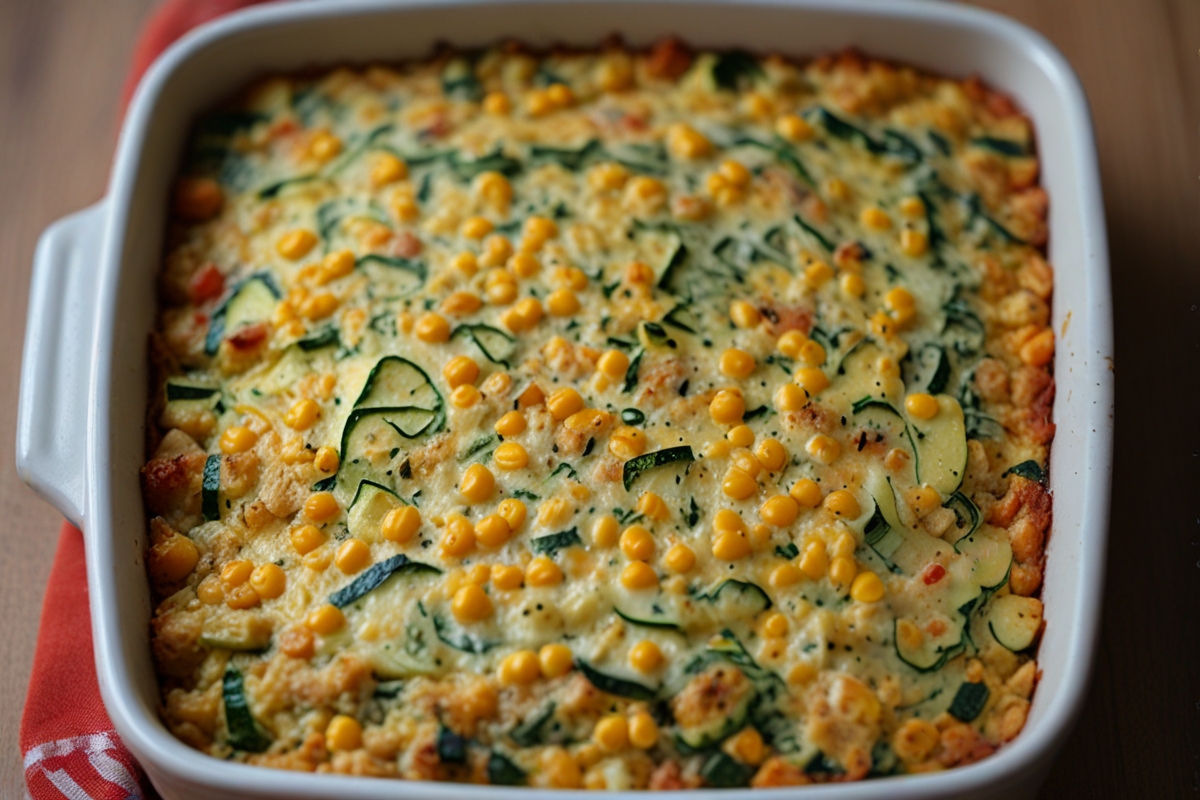
Ingredients and Preparation
- Zucchini Preparation: Start by shredding 5 cups of zucchini or summer squash, then use a clean kitchen towel to squeeze out excess moisture.
- Sautéing Vegetables: Melt 2 tablespoons of butter in a skillet, add 1 cup finely chopped onion and cook until golden brown, about 5 to 8 minutes. Introduce the shredded zucchini with a pinch of salt and sauté until soft and dry.
- Casserole Mixture: In a large bowl, combine the sautéed vegetables with 1 ½ cups corn kernels, 1 ¼ cups no-salt-added cottage cheese, 1 cup crumbled feta cheese, ½ cup chopped red bell pepper, ¼ cup chopped fresh dill, 2 tablespoons all-purpose flour, 1 teaspoon baking powder, and ¼ teaspoon ground pepper. Mix well.
- Adding Eggs: Stir in 10 lightly beaten large eggs to the vegetable and cheese mixture until well combined.
Baking
- Oven Preparation: Preheat the oven to 350°F and coat a 9-by-13-inch baking dish with cooking spray.
- Bake: Pour the casserole mixture into the prepared dish and bake for about 40 minutes, or until the center is set and the edges are lightly browned.
Nutritional Information
- Calories: Each serving contains 244 calories.
- Macros: The dish provides 14g of fat, 14g of carbohydrates, and 17g of protein per serving.
Health Benefits
- Low Sodium: Using no-salt-added cottage cheese reduces sodium intake significantly, saving more than 300 mg per serving compared to regular cottage cheese.
Chicken with Spinach & Tomato Orzo Salad Clean Eating Recipes
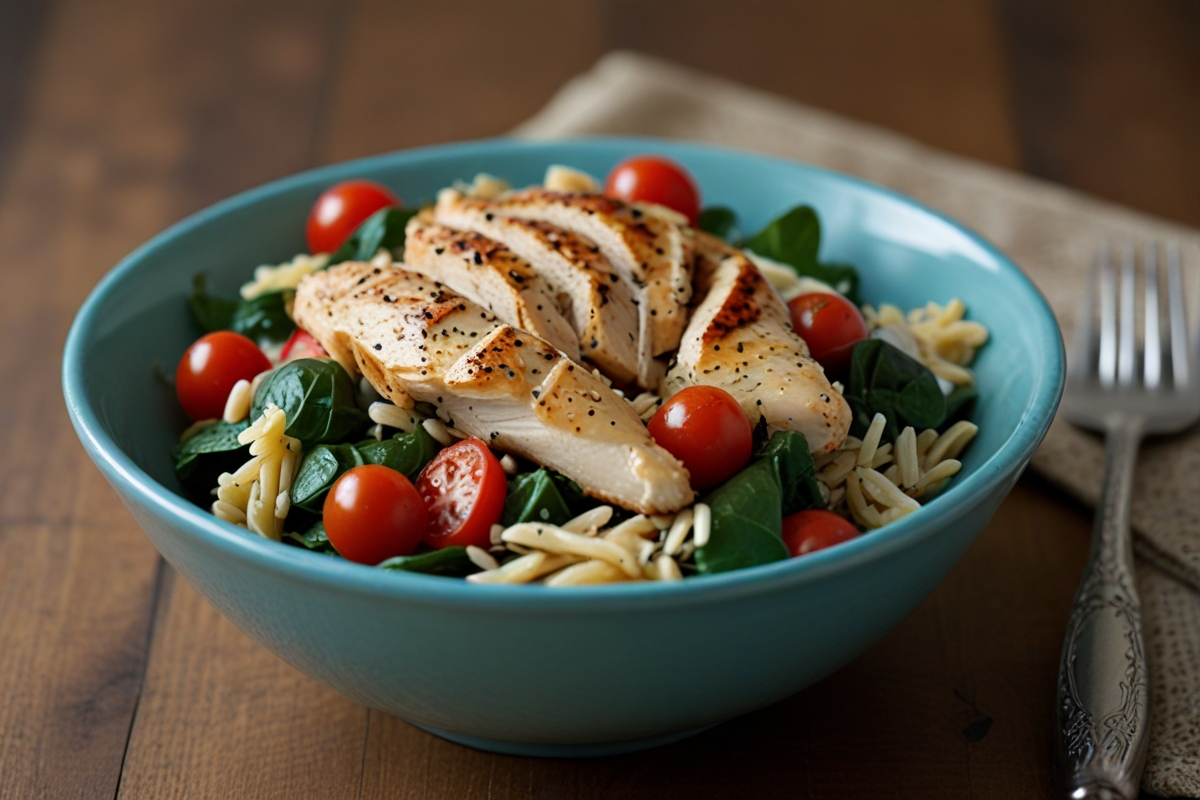
Ingredients and Preparation
- Chicken Preparation: Brush two skinless, boneless chicken breasts with 1 tablespoon of extra-virgin olive oil, then season with 1 teaspoon of lemon zest and 1/4 teaspoon each of salt and ground pepper. Bake in a preheated oven at 425 degrees F until the internal temperature reaches 165 degrees F, which typically takes about 25 to 30 minutes 1.
- Orzo and Vegetables: In a saucepan, bring water to a boil and cook whole-wheat orzo for 8 minutes. Add baby spinach in the last minute of cooking. Drain and rinse with cold water. In a large bowl, combine cooked orzo and spinach with chopped cucumber, tomato, red onion, crumbled feta cheese, and Kalamata olives.
Dressing and Assembly
- Dressing: Whisk together 2 tablespoons of extra-virgin olive oil, 2 tablespoons of lemon juice, 1 clove of grated garlic, and 2 teaspoons of chopped fresh oregano. Season with the remaining 1/4 teaspoon each of salt and pepper.
- Combining Ingredients: Stir most of the dressing into the orzo mixture, reserving about 1 tablespoon. Drizzle the reserved dressing over the baked chicken and serve together with the orzo salad.
Nutritional Information
- Calories: 402 per serving
- Protein: 32g
- Carbohydrates: 28g
- Fat: 8g
- Dietary Fiber: Provides 23% of the daily value
- Vitamin A: 35% of the daily value
- Vitamin C: 18% of the daily value
- Folate: 13% of the daily value
- Iron: 6% of the daily value 1
This recipe not only offers a balanced meal with a good mix of protein, carbs, and fats but also incorporates a variety of vitamins and minerals essential for a healthy diet.
Salmon-Stuffed Avocados Clean Eating Recipes
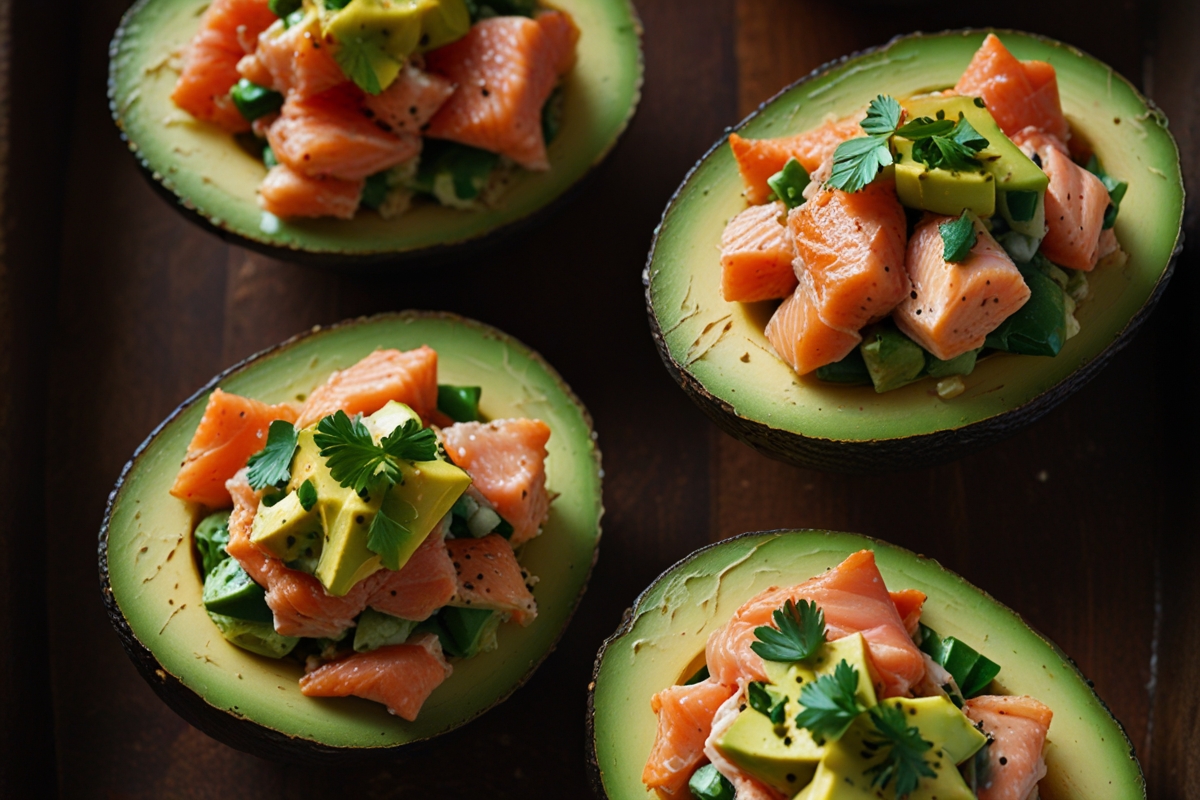
Ingredients and Nutritional Profile
- Main Ingredients: Utilizes canned salmon, avocados, Greek yogurt, celery, parsley, lime juice, mayonnaise, Dijon mustard, and various seasonings to create a filling and flavorful meal.
- Nutritional Benefits: Each serving delivers 293 calories, with 20g of total fat, 7g of dietary fiber, and 23g of protein, making it a balanced option for those monitoring their intake.
Health Benefits
- Omega-3 Fatty Acids: Rich in omega-3 fatty acids from salmon and avocados, beneficial for heart and brain health.
- Vitamins and Minerals: Provides a significant amount of essential vitamins and minerals, supporting overall health.
Variations and Customization
- Alternative Ingredients: Offers a variation including wild-caught salmon, lemon juice, olives, chives, dill, and Dijon mustard for a different flavor profile.
- Add-Ins: Can be customized with red bell pepper, green onion, cilantro, jalapeno, and additional spices to cater to individual tastes and dietary needs, making it a versatile dish for various meal plans.
Dietary Compatibility
- Clean Eating Focus: Emphasizes healthy fats and fresh ingredients, aligning with clean eating principles suitable for weight loss, improving energy levels, and balancing blood sugars
- Meal Options: Provides a nutritious and satisfying lunch option that is low-carb, low-fat, and gluten-free, catering to diverse dietary preferences
Conclusion
Throughout this article, we have explored a diverse range of clean eating recipes designed to revitalize your diet over a 30-day period. From hearty chickpea and spinach stew to salmon-stuffed avocados, each recipe has demonstrated how a focus on whole, nutritious foods can transform meal planning into an adventure in healthy eating.
These recipes, rich in essential nutrients and flavors, embody the essence of clean eating by emphasizing foods in their most natural state, thereby offering a well-rounded approach to achieving a balanced diet.
The significance of integrating clean eating principles into your lifestyle cannot be overstated. Not only does it contribute to improved health and well-being, but it also encourages a mindful way of living that prioritizes the quality of ingredients we choose to consume.
As we draw to a close, let these recipes serve as a starting point for further exploration into clean eating, inspiring you to create meals that nourish both the body and soul. Remember, the journey towards a healthier diet is a personal one, full of discovery, flavor, and most importantly, fulfillment.
Follow our social networks facebook, pinterest and see more tips
1. What does it mean to eat clean for 30 days?
To eat clean for 30 days, follow these guidelines: consume five to six small meals daily, eat every two to three hours, and ensure each meal includes a combination of lean protein and complex carbohydrates. Drink at least 2 liters (8 cups) of water daily. Always have clean foods available to avoid missing meals and steer clear of highly processed and refined foods, such as white flour and sugar.
2. What constitutes five clean meals a day?
Eating five clean meals a day involves having breakfast, lunch, dinner, and two snacks. Proper planning is essential, which means deciding in advance what you will eat for each meal and snack throughout the day. It’s also important to maintain a schedule of eating every two to three hours.
3. What is considered the ultimate clean eating diet?
The ultimate clean eating diet typically includes a variety of whole fruits and vegetables, lean proteins, whole grains, and healthy fats. It avoids highly processed snacks and packaged foods that contain added sugars and salts. This diet may also incorporate specific dietary preferences like plant-based, grass-fed, sugar-free, or gluten-free options.
4. What does a typical day of clean eating entail?
A typical day of clean eating is rich in fresh fruits and vegetables, high-fiber whole grains and legumes, along with healthy fats and lean proteins such as fish and chicken. This eating plan excludes added sugars and minimizes intake of sodium and saturated fats, which are harmful to heart health when consumed in excess.
